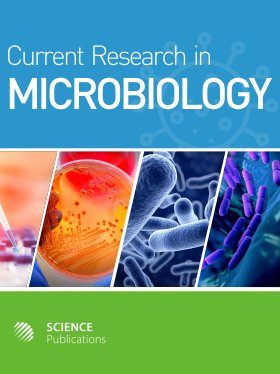Antibacterial Activity of β-Cyclodextrin and 2-Hydroxypropyl-β-Cyclodextrin Trimethoprim Complexes
- 1 Griffith University, Australia
- 2 Princess Alexandra Hospital, Australia
- 3 Queensland University of Technology, Australia
Abstract
Problem statement: Cyclodextrin complexation has previously been shown to improve the solubility and dissolution properties of trimethoprim; however, no report provides an account of the effect cyclodextrin complexation has on the antibacterial activity of this agent. Approach: β-cyclodextrin and 2-hydroxypropyl β-cyclodextrin inclusion complexes of trimethoprim were prepared and confirmed by differential scanning calorimetry and proton nuclear magnetic resonance. The in-vitro antibacterial activity, in terms of minimum inhibitory concentrations, of cyclodextrin-drug complexes were compared to uncomplexed free trimethoprim by a broth-microdilution method against several sensitive and resistant Gram-positive and Gram-negative bacteria. The effect of complexation on the apparent permeability coefficients was also determined using a Caco-2 permeability assay to account for potential alterations in bioavailability that could influence in-vivo antibacterial activity. Results: Inclusion complexation of trimethoprim with both unsubstituted and hydroxylated versions of β-cyclodextrin produced a reduction in the MIC80 required to inhibit the growth of S. aureus ATCC 29213, S. pneumoniae ATCC 4961, S. epidermidis ATCC 14990 and E. coli ATCC 25922 (p>0.05). The effect was limited to bacteria normally susceptible to trimethoprim. Neither complex negatively affected the antibacterial activity of trimethoprim. Hydroxypropyl-β-cyclodextrin and β-cyclodextrin inclusion complexes significantly (p<0.01) increased the apparent intestinal permeability of trimethoprim by 39.8 and 56.1%, respectively. Considering the effect cyclodextrin inclusion complexation has on the antibacterial activity of trimethoprim, the improved intestinal permeability of these complexes has the potential to improve the in-vivo antibacterial activity of the agent by enhancing the steady-state concentration of the drug when dosed orally. Conclusion: These results would suggest that physical complexation with either of these cyclodextrins would provide a feasible strategy to improve the pharmaceutical and pharmacokinetic properties of trimethoprim.
DOI: https://doi.org/10.3844/ajmsp.2011.1.8

- 7,601 Views
- 5,764 Downloads
- 11 Citations
Download
Keywords
- Antibacterial activity
- trimethoprim
- 2-hydroxypropyl
- β-cyclodextrin
- inclusion complex
- antimicrobial activity
- caco-2 cells
- Differential Scanning Calorimetry (DSC)
- Minimum Inhibitory Concentrations (MIC)
- S. aureus
